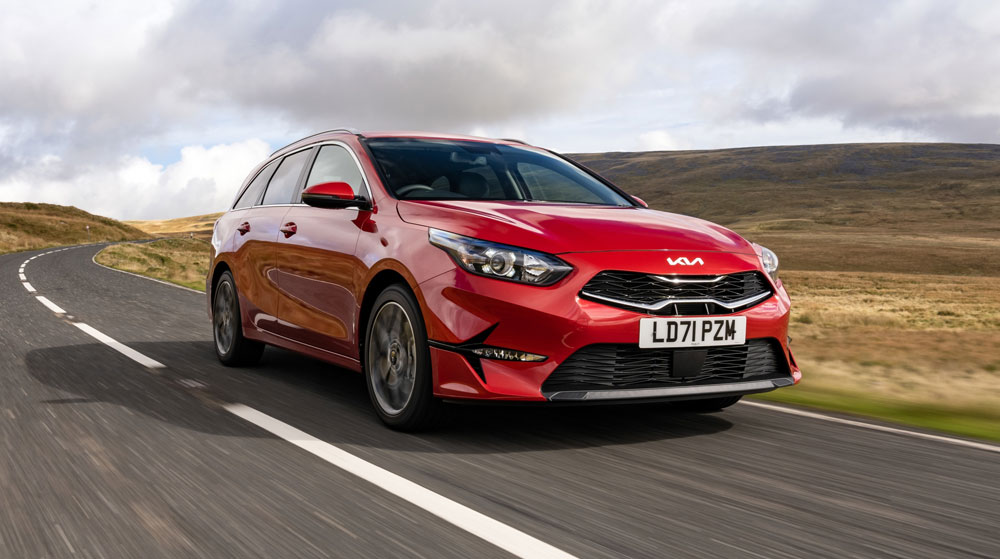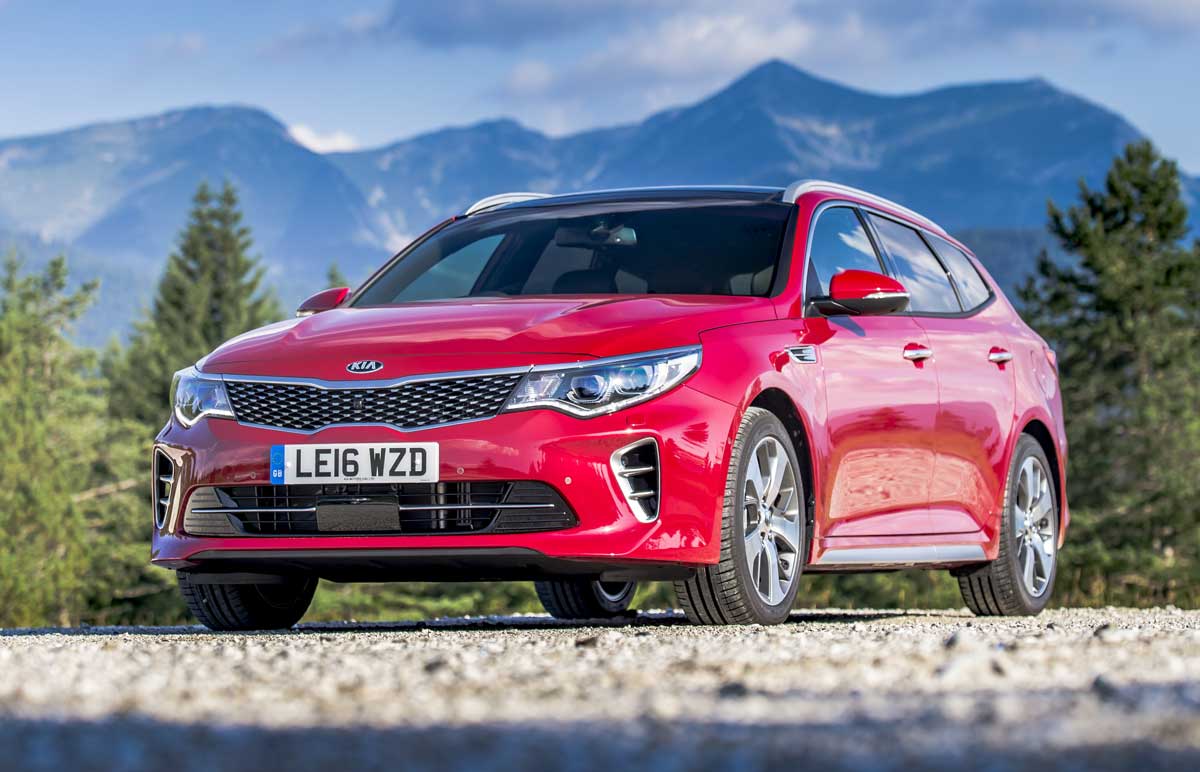
Kia
Optima
With its award-winning bold design and range of top notch on-board technical wizardry, the Kia Optima boasts comfort levels normally associated with a luxury premium brand.
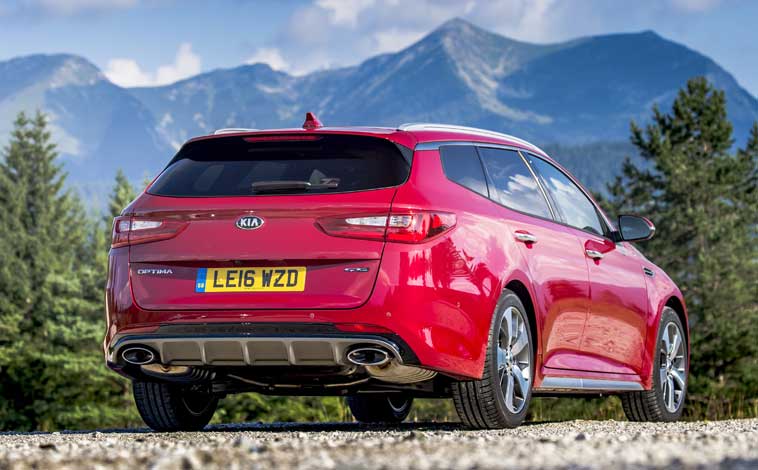
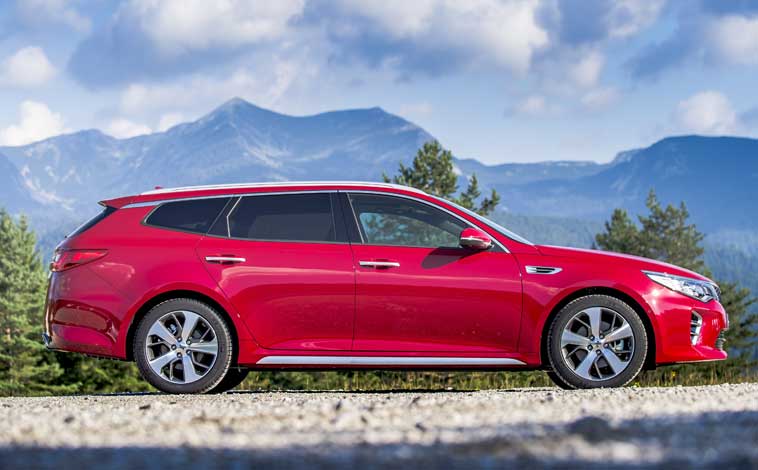
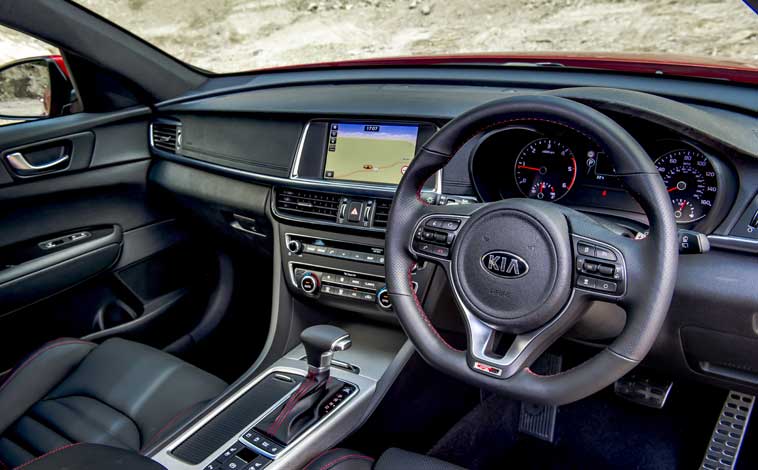
The good
Great value plus that transferable seven-year, 100,000-mile warrantyThe bad
Competing against big names like Mondeo and PassatTech Specs
Test Drive
Kia Optima Sportswagon – first drive (2016)
A wise person once claimed that variety is the spice of life and if that’s true then things are certainly hotting up over at Kia where a larger-than-life Sportswagon model has just been added to the popular Optima range.
The car is Kia’s first venture into the D segment in estate guise and is competitively priced from £22,295. Factor in some excellent economy potential and it’s guaranteed to get the attention of fleet market managers up and down the country.
The Sportswagon is driven by a highly-efficient and punchy 1.7-litre turbodiesel powertrain delivering 139bhp along with 340Nm of torque and customers can choose from three generously-equipped trim levels called ‘2’, ‘3’ and GT Line-S. Then in 2017, a sporty high performance GT version will be introduced. The transmission is via a six-speed manual gearbox or a 7DCT dual-clutch automatic variant that is available as an option on grade ‘3’ or standard on the GT Line S.
Many estate cars offer versatility at a cost especially when it comes to the styling department, but thankfully the Optima Sportswagon makes no such compromises. There is nothing boxy about its appearance and despite having almost identical dimensions to the saloon, there are numerous additions that help distinguish its estate status. These include roof rails, a DC power outlet in the luggage area, a handle for one-touch folding of the rear seats, a luggage side partition and towing connection preparation. Grade ‘3’ adds a luggage rail system, boot lip trim and privacy glass. Then a powered tailgate is introduced in the range-topping GT-Line S.
The front half of the Sportswagon is identical to that of the saloon, but from the B-pillars back it’s all change. There is a rising shoulder line with raked rear window and tapering roof which helps to portray a sporty yet elegant appearance. Other eye-catching design cues, depending on the trim level, include 17 or 18-inch alloys, sleek headlight clusters with LED daytime running lights, rear combination lamps and a sliding panoramic roof.
All three models boast a generous level of kit and according to the grade selected, include the likes of a colour touchscreen, a pitch-perfect Harman Kardon sound system, DAB digital radio, heated or ventilated seats which can be electrically-adjusted, air conditioning, a reversing camera, a mobile phone charger, cruise control with a speed limiter, ambient interior lighting and plenty more besides.
The cabin is beautifully refined with lots of high quality materials incorporated throughout. It features a design format that is instantly recognisable as a Kia these days with the fascia divided into upper and lower sections. As a result, the number of switches and buttons is kept to a minimum to help create a clutter-free environment with many functions accessed via the easy-to-operate touchscreen.
In addition, the Optima Sportswagon is available with a full suite of advanced connectivity and active driver assistance features, including Android Auto, Apple CarPlay, plus Kia Connected Services powered by TomTom which provides live traffic updates, speed camera alerts and local points-of interest along with weather reports. This service is provided free of charge for seven years.
The interior of the Sportswagon is exceptionally spacious and the massive boot can swallow up 552 litres of cargo which is increased to 1,686 litres with the rear seats dropped flat. These seats have a 40:20:40 configuration which means two passengers can travel in the back whilst still transporting longer items. And those rear occupants would feel anything but cramped as the car offers ample leg, head and shoulder space so even passengers of the taller variety can travel in supreme comfort.
We tested out two versions of the Optima Sportswagon on the sweeping roads around Munich. First up was the grade ‘3’ with six-speed manual transmission costing £24,495. This car can sprint from 0-60mph in 9.8 seconds, redlines at 124mph, has combined fuel efficiency of 64.2mpg and carbon emissions of 113g/km.
This particular model will really appeal to the fleet market and is economically priced with frugal running costs. The car proved an absolute delight to drive on a variety of roads. In busy town centres, it was agile and very easy to manoeuvre. Then on winding lanes the road-holding was assured and the steering beautifully precise meaning it could be thrown into corners with a high degree of confidence. Finally, on fast-moving motorways it accelerated effortlessly through the gears and almost glided along eating up the Tarmac with barely any engine or road surface noise infiltrating the cabin. There was a constant supply of power on tap at all times which made light work of overtaking and the all-round visibility was also excellent.
Next up was the GT-Line S model with 7-speed dual clutch gearbox costing £30,595. This model can reach 60mph from a standing start in 10.7 seconds, tops out at 124mph, can deliver 61.4mpg on a combined run with CO2 emissions of 120g/km.
This is the car with all the sporty eye-catching good looks, although the changes are purely cosmetic so the performance stats are virtually identical to the ‘3’ version. It certainly has the attention-grabbing appearance though with more aggressive styling thanks to GT-Line bumpers and side sills, bespoke 18-inch alloys, full LED front lamps with automatic levelling, dynamic cornering lights, LED rear combination lights, a dual chrome-tipped exhaust system and silver metallic-trimmed side sill mouldings.
Once again the Sportswagon handled beautifully, but this time the automatic transmission took care of any gear changes. That said; there are steering wheel-mounted paddle shifters if you fancy taking a little more control. There is also a Drive Mode Select feature that offers Normal, Eco and Sport settings to alter the throttle, gear shift timing and steering wheel weight accordingly.
To be honest, both models were up to any challenge and they both delivered excellent driving dynamics along the way. Comfort levels were of a premium standard and when you factor in the comprehensive list of outstanding safety specifications, the all-round package is very attractive indeed.
The Optima Sportswagon may be Kia’s first venture into D segment estate territory, but it is an excellent piece of kit that really offers the best of both worlds. It is sleek and dynamic in design yet successfully delivers all the comfort, versatility and flexibility required in the past-paced world we live in.
Test Drive
Kia Optima PHEV – first drive (2016)
Kia is looking to a greener future and has set itself very high targets with a challenge to lower the average carbon emissions of its range by 25 per cent before the end of the decade.
And that objective has been given a massive boost with the launch of the South Korean company’s first plug-in hybrid model.
We have become familiar with the panache and refinement of the luxurious Optima saloon and more recently the Optima Sportswagon, but now Kia has introduced the Optima PHEV (Plug-in Hybrid Electric Vehicle).
The car carries a £31,495 price-tag which includes the Government’s £2,500 plug-in car grant. Performance figures show it can achieve up to 33 miles of all-electric driving, boasts fuel economy up to 176.6mpg and has carbon emissions of just 37g/km. And for business drivers out there, those numbers equate to just seven per cent benefit-in-kind tax in 2016-17.
The Optima PHEV skillfully combines a 2.0-litre 154bhp petrol engine with a 50kW (67bhp) electric motor and when they work in tandem they can generate 202bhp and 375Nm of torque.
The batteries are neatly integrated behind the rear seat and in the spare wheel well which, along with a 15-litre reduction in the car’s fuel tank capacity, means the Optima PHEV still boasts a generous boot size of 307 litres – the standard Optima has a 510-litre capacity.
From any angle the vehicle looks both elegant and dynamic with its 17-inch alloys, LED daytime running lights and headlights, plus a package of aerodynamic and styling changes that help distinguish it from the orthodox saloon. These include an all-new active air flap grille which automatically closes when the engine cooling requirements are at their lowest so allowing air to pass more efficiently around the car. Other distinctive aspects are blue-tinted headlights and chrome enhancements with a metallic blue finish on the lower front air grille, the tiger-nose main grille and the side sills. There is ‘ECO plug-in’ badging on the front wings and the recharging port is positioned in the left front wing.
Step inside the stylish and beautifully-crafted cabin and it’s impossible not to be wowed by the level of technology that greets you. Creature comforts include the likes of faux leather seats with powered adjustment, an 8-inch colour touchscreen navigation system with reversing camera, front and rear parking sensors, a Harman Kardon 10-speaker sound system, a wireless smartphone charger, cruise control with speed limiter, dual zone air conditioning and plenty more besides, including all the connectivity facilities you could ever wish for.
Exclusive to the Optima PHEV is a series of menus that display data regarding the car’s EV range, nearby charging stations and energy usage based on driving style. There are also some innovative hybrid technologies to help the driver get the best possible mileage and a choice of Eco and Normal driving modes to achieve maximum efficiency or higher performance.
The Optima PHEV can be charged from empty in about three hours, but there are many ways of increasing battery charge levels on the move such as through regenerative braking. The car also boasts a clever Heating Ventilation Air Conditioning system which was first seen in the Kia Soul EV and allows only the driver’s side of the car to be cooled when the other seats are unoccupied.
We tested out the Optima PHEV on a combination of twisting country lanes and faster German motorways and it was up to any challenge put in its path.
It can sprint from 0-60mph in 9.1 seconds, maxes out at 121mph and features the economy figures mentioned above. It can achieve up to 33 miles of pure electric driving and that’s at speeds up to 75mph.
The start-up is beautifully hushed and the car accelerates away in a smooth and efficient manner. In fact, one of the most impressive features of this model is how seamless the switch between electric-only and hybrid driving is. There is no vibration, loud engine acoustics or sudden surges in power – it’s all wonderfully refined.
The road-holding is grounded and the steering nice and precise. It would be fair to say that most of the time, the car handles like a ‘normal’ car and you wouldn’t even consider its PHEV characteristics.
Passenger comfort is first-rate and the car has a very premium feel to it with soft-touch materials and a wealth of classy techno treats to be explored.
Factor in the comprehensive list of safety specifications and the latest arrival to the ever-growing Optima line-up is a most welcome addition that will certainly tick all the right boxes when it comes to the business car market.
Test Drive
Kia Optima 1.7 CRDi ‘2’
Anyone who thinks the saloon market is controlled by the German marques alone should check out the latest Kia Optima as a very viable alternative.
For the car has just undergone a facelift and now boasts sharper styling, a more sophisticated cabin and advanced new safety features.
The sleekly-streamlined car with its coupe good looks is a firm favourite with business drivers who regularly clock up the motorway miles and first impressions are an indication to why the Optima is guaranteed to turn heads. It looks fabulous from any approach thanks to 18-inch alloys, tinted glass, a panoramic sunroof, body-coloured door handles and mirrors, plus sweeping light clusters.
The interior is loaded with premium quality features such as black leather upholstery, an eight-way powered driver’s seat with memory setting, heated front seats, a leather trimmed steering wheel, all round electric windows and a smart wood grain centre console trim.
Techno treats are plentiful too with a six-speaker sound system which is compatible with all modern media devices, dual-zone air conditioning, Bluetooth connectivity, automatic lights and wipers, reversing sensors with camera, sat nav with touchscreen interface and plenty more besides.
The test car was powered by a 1.7-litre diesel engine and can sprint to 60mph from a standing start in 10.2 seconds and onto a top speed of 125 mph.
According to official figures the car can deliver combined fuel economy of 57.6mpg with carbon emissions of 128g/km.
Although the acceleration isn’t blistering it is steady and smooth as the car eases through the six speed manual gearbox.
And there is a constant supply of power on tap at all times which helps to make light work of any overtaking manoeuvres.
In and around busy town centres, the Optima cruised along effortlessly and parking was made all the easier thanks to the sensors and reversing camera.
The driver benefits from excellent all-round visibility which is another bonus because when the Optima is not being driven for work purposes it will often be spotted on the school run where you do need eyes in the back of your head.
But it’s out on the faster open roads where the Optima really excels and proved an absolute delight to drive.
The road-holding was flawless and the efficient insulation meant the cabin remained beautifully quiet with very little road, engine or wind noise to speak of.
All dials and instrumentation are clear to see and ideally positioned for driver usability. And comfort levels are also very high with ample room in the back for two adults to stretch out in style – three at a bit of a push.
There will be little restrictions when it comes to luggage limits too as the Optima can cater for a capacity of 505 litres and the 60:40 split-folding rear seats open up that limit even further. Elsewhere there are numerous storage compartments scattered throughout the cabin, including a cooling glovebox, a centre console armrest with storage box, deep door pockets and cup holders.
The vehicle also features a comprehensive range of safety specifications including anti-lock brakes with electronic brakeforce distribution and brake assist system, hill start assist, emergency stop signalling, electronic stability control and vehicle stability, motor driven power steering and intelligent stop and go, plus numerous airbags to help protect all occupants.
All in all, the saloon market is a fiercely competitive one and whilst the Kia Optima may not be up to the premium standard that is set by some of the German manufacturers, it does stand out for many reasons. It’s very competitively and economically priced at £22,895, it comes fully loaded with no hidden extras, it boasts a magnificent seven-year warranty and it has its own unique identity to help it stand out from the crowd.
Test Drive
Kia Optima
If you’re going to launch a car into the highly competitive business saloon market you must have full confidence in your vehicle and Kia has every reason to believe its stunning Optima will make an impact.
For this highly-specced, competitively priced, great looking four-door saloon has all the makings of a success story.
It was first introduced to the public at the New York Auto Show in 2010 and soon went on to become Korea’s biggest-selling car. And now it’s being let loose on the UK market.
Although the Optima will only initially be sold with a 1.7-litre diesel-powered engine, there is still plenty of choice with four trim levels and manual or automatic options too.
With first impressions being so important, the Optima is an instant winner with eye-catching good looks accentuated by a coupe-style profile with sweeping lines, smart alloys, sculpted front and rear light clusters and flared wheel arches.
And the build quality is just as apparent once you take your seat inside the spacious cabin. There is a distinctly sporty edge to its design and you cannot fault the level of craftsmanship or the technical wizardry at your disposal.
Even the lowest trim Optima 1 model is packed with quality features such as air conditioning, a leather multi-functional steering wheel, electric windows, cruise control and Bluetooth with voice recognition.
Optima 2 adds solar glass with auto defogging, an eight-way electrically-powered driver’s seat with memory settings, heated seats, dual zone climate control, automatic wipers, reverse parking sensors and plenty more. There are two Optima 2 models to choose from – the Luxe and Tech – each available with manual or automatic transmissions. The Luxe includes leather seats, a panoramic sunroof and 18-inch alloys and anyone selecting the Tech gets a brilliant 12-speaker sound system and touch-screen sat nav.
Finally, the real daddy of the family – Optima 3 which basically adds all the spec from all the models plus a few extras such as mood lighting, alloy pedals, heated rear seats, reversing camera, full black leather upholstery and plenty more besides.
So with so much choice it would appear there is an Optima to suit everyone’s individual preferences.
And when it comes to performance, the saloon is certainly up to the challenge.
Kia believes the Optima 2 will be the most popular, so the first model tested was Tech with six-speed manual transmission.
All too often new cars are given the big build up and then the actual performance is a let-down – not so the Optima.
Comfort levels are exceptionally high and all the dials, controls and read-outs are perfectly positioned for driver usability.
In slower more congested traffic, the Optima cruised along effortlessly and manoeuvrability was excellent. The driver benefits from an obstructed all-round visibility which is very useful with cars and pedestrians darting out from all angles.
And although the rear windscreen is quite small in depth it is fairly typical of most stylish saloons these days.
But it was out on the faster roads that the Optima really impressed me with its excellent acceleration and very smooth handling. The road surface and engine noise was virtually non-existent even at higher speeds and the overall handling was exemplary.
If I were to be really picky and look for something to complain about it would be the glare from the colour touchscreen which can be quite bright at times, but that’s a very small gripe indeed.
The Tech model boasted stats of 0-60mph in 10.2 seconds, a top speed of 126mph, combined fuel efficiency of 57.6mpg and CO2 figures of 128g/km. It costs £21,695.
The second model to be put through its paces was the Luxe which was fitted with a six-speed automatic transmission with paddle shifts on the steering wheel if required.
Once again, it performed admirably and once again I would be clutching at straws to find any real negative pointers.
After lengthy journeys in both models I still felt pretty refreshed, similar to travelling a good distance in a premium brand car.
The Luxe model can reach from 0-60mph in 11.5 seconds, it tops out at 122mph, has a combined fuel efficiency of 47.1mpg with carbon emissions of 158g/km. It comes with a price-tag of £23,195.
Admittedly the fantastic Infinity stereo and sat nav system were gone, but in their place was a larger-than-life sunroof, 18-inch alloys and leather upholstery. Quite a fair trade really and I found it impossible to pick between the two models.
Another factor that cannot go without mention is the spacious interior. There is bags of room for four “good-sized” adults to travel in real comfort with plenty of leg, head and elbow room in the back.
And the generously-sized boot along with 60:40 split-folding rear seats means there will never be any limitations on luggage either.
Kia has packed a very comprehensive list of safety specifications into the Optima, including anti-lock brakes, electronic brakeforce distribution, numerous airbags, electronic stability control and even an emergency stop signalling system which flashes the brake lights rapidly to warn following motorists.
And finally, there is Kia’s unique seven-year or 100,000-mile fully transferable warranty which is still a great crowd-pleaser.
So, it would seem Kia has a winner with its latest saloon and one thing is for sure – with prices starting at just £19,595, rival fleet car manufacturers will be getting a tad apprehensive.
Latest Related NEWS
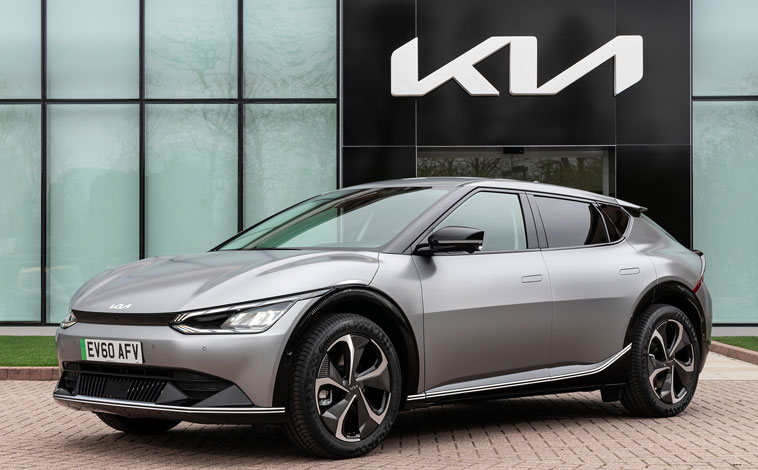
Kia UK celebrates record sales success
Kia UK Limited has achieved more than 100,000 sales in one year for [...]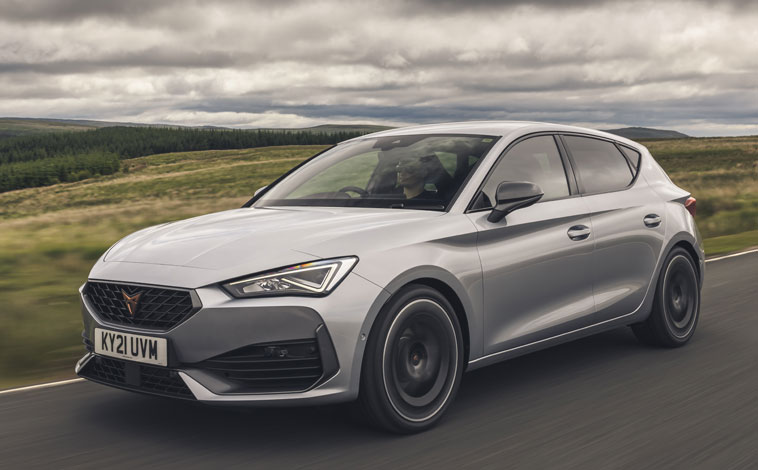
Additional engines for the CUPRA Leon
CUPRA UK has opened its order books for the Leon Hatch and Estate [...]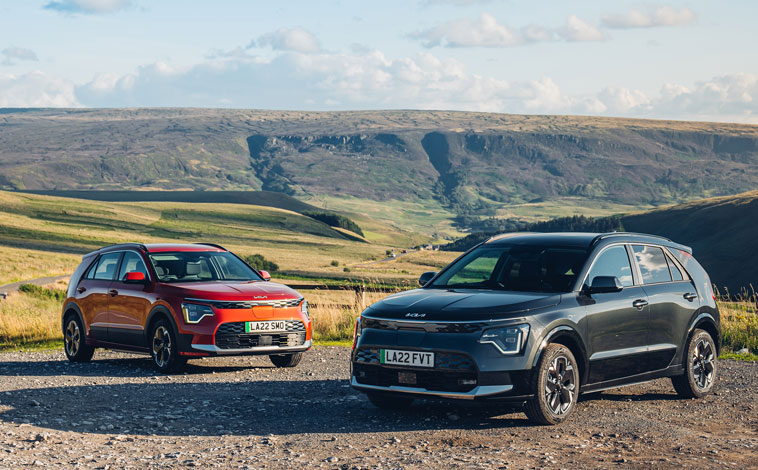
Attractive retail offers for Kia line-up
Kia has launched its latest retail offers, offering attractive ways to get behind [...]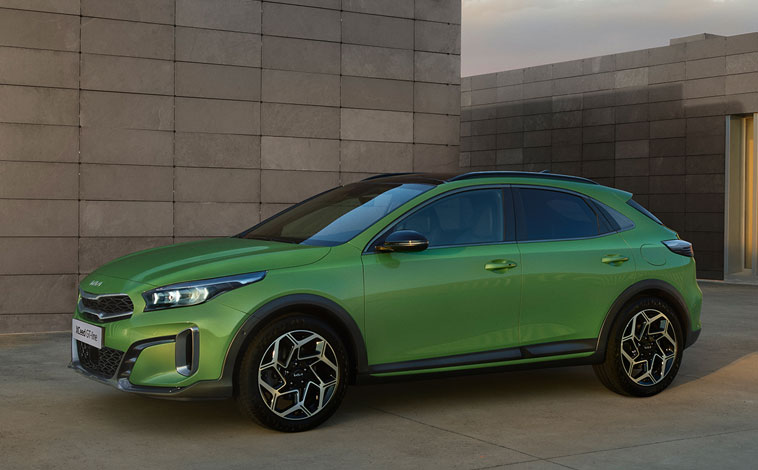
New-look Kia XCeed gains a GT-Line trim
After selling more than 120,000 units in Europe, Kia’s highly successful XCeed compact [...]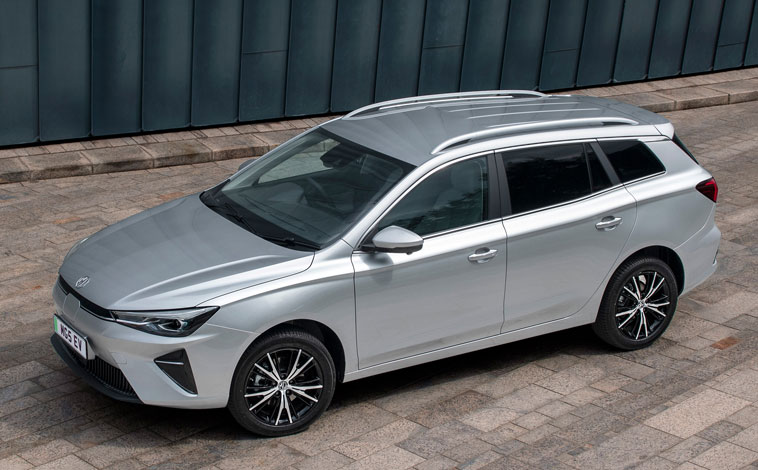
Prices and trims announced for MG5 EV
MG has confirmed full pricing and specification of the new MG5 EV estate, [...]
Kia launches high-end new Sorento trim
Kia is introducing the Sorento ‘Edition’, a premium and single grade available across [...]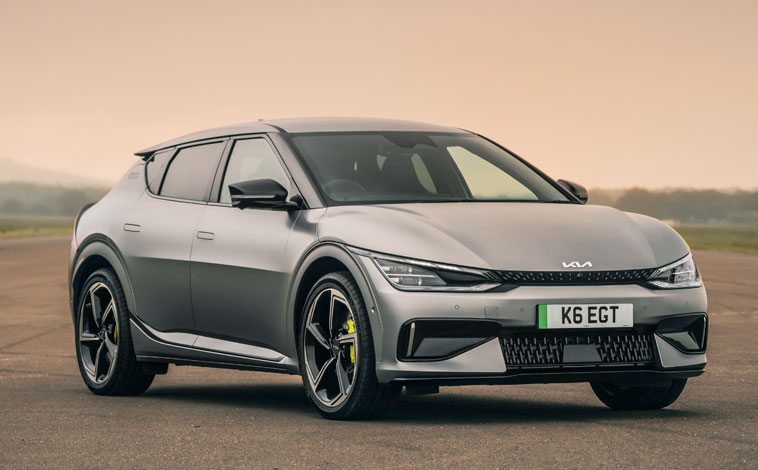
EV6 GT takes on famous Goodwood hill
The Kia EV6 GT will make its dynamic debut at the 2022 Goodwood [...]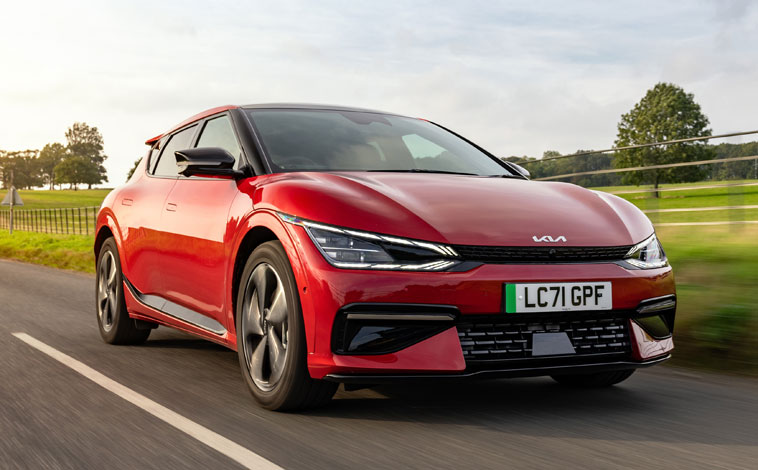
Kia is the UK’s best-selling car maker
Kia is the number one best-selling car brand in the UK year-to-date (YTD), [...]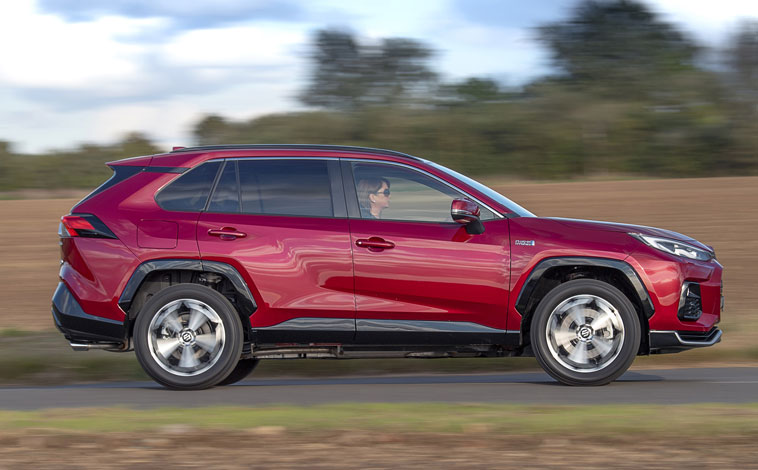
Faster charging for the Suzuki Across
Suzuki launched the Across PHEV in Autumn 2020 and is pleased to announce [...]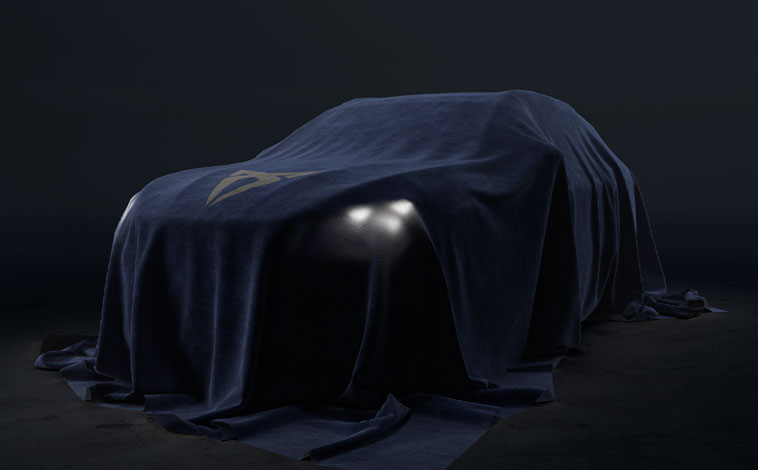
CUPRA announces plans for all-new SUV
CUPRA’s roll out of electrified vehicles continues with the introduction of an all-new [...]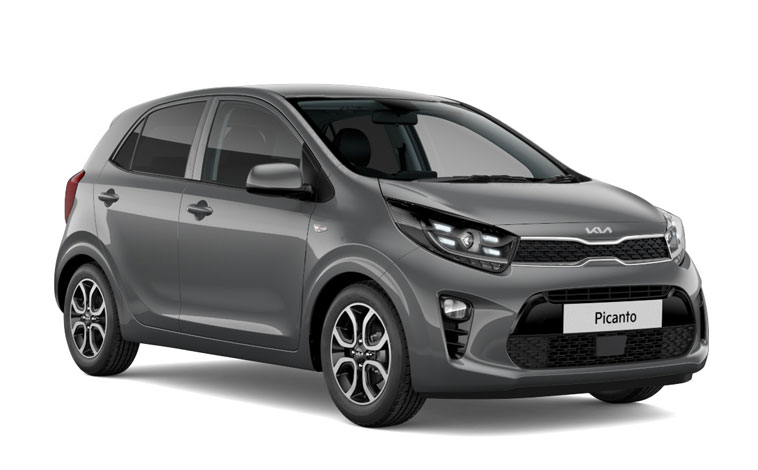
Kia adds new Picanto Shadow model
Kia UK has revealed the Kia Picanto Shadow, a special edition of the [...]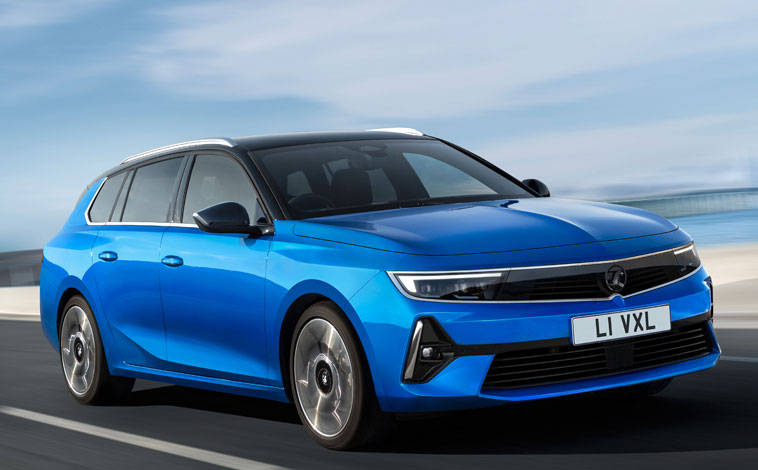
Sports Tourer joins new Astra line-up
Following the world premiere of the next-generation Astra hatchback in September, Vauxhall has [...]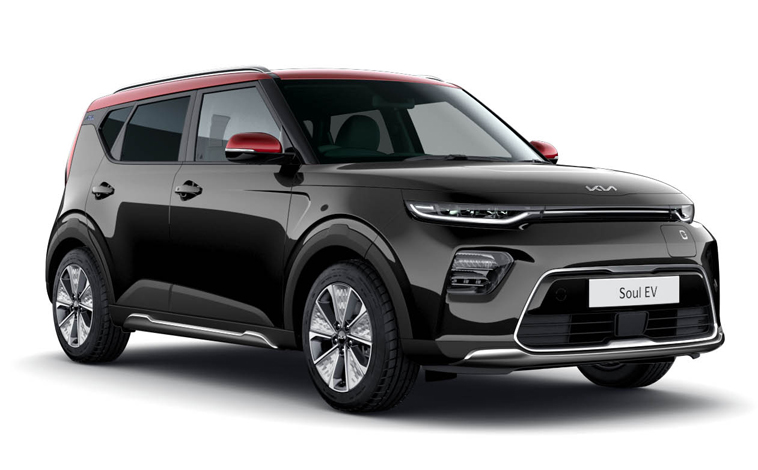
Kia takes its Soul EV to the Maxx
Kia UK has introduced the Soul EV ‘Maxx’, replacing the existing ‘First Edition’ [...]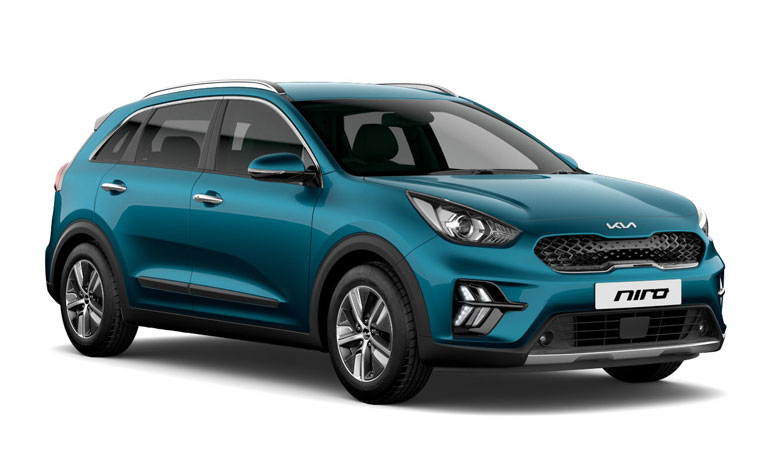
Kia adds a new edition to its ...
Kia UK Limited has revealed a new special edition version of its best-selling [...]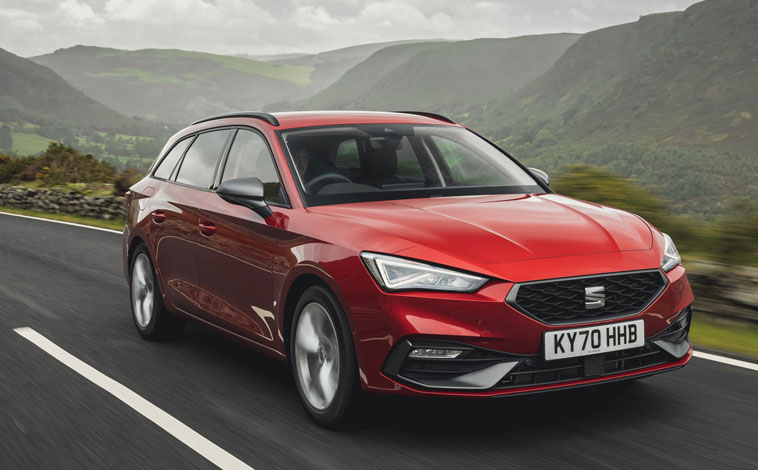
New colour and extra kit for SEAT Leon
The SEAT Leon will receive a boost to its standard specification, a new [...]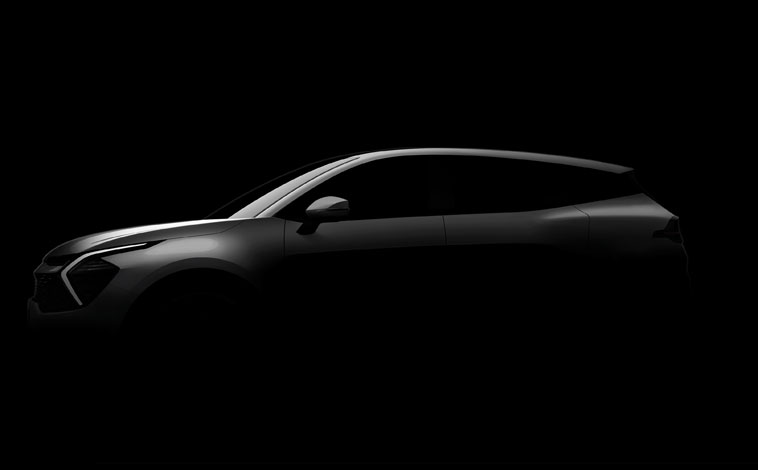
First teaser images of new Kia Sportage
Kia has revealed the first official teaser images of the all-new Sportage – [...]Related Reviews
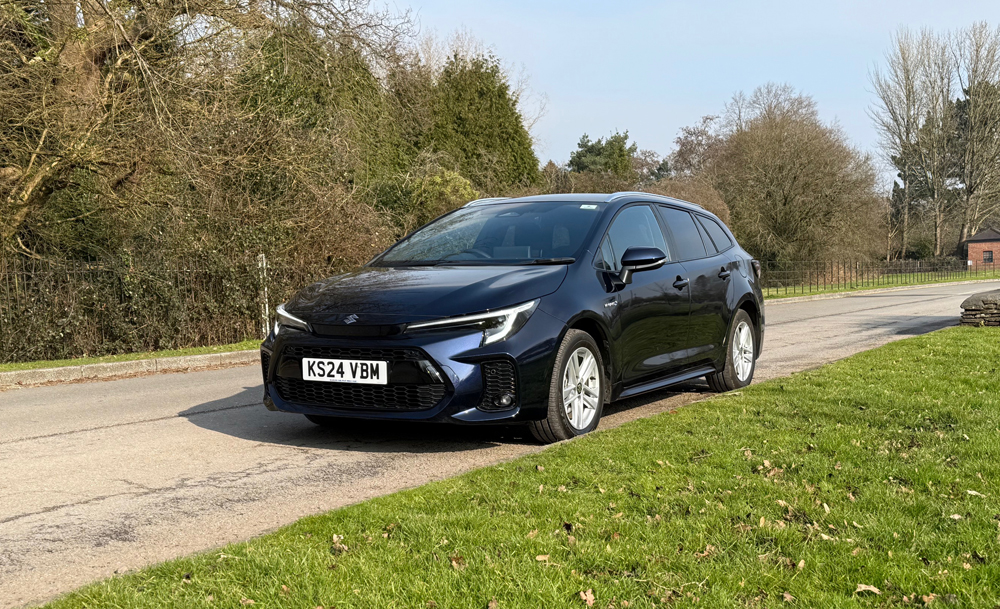
Suzuki Swace
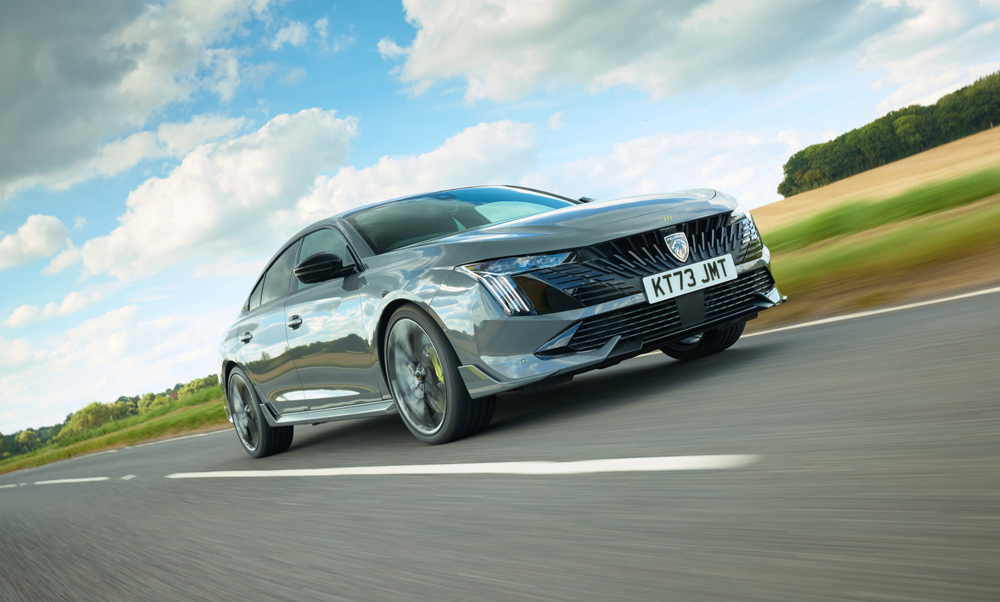
Peugeot 508
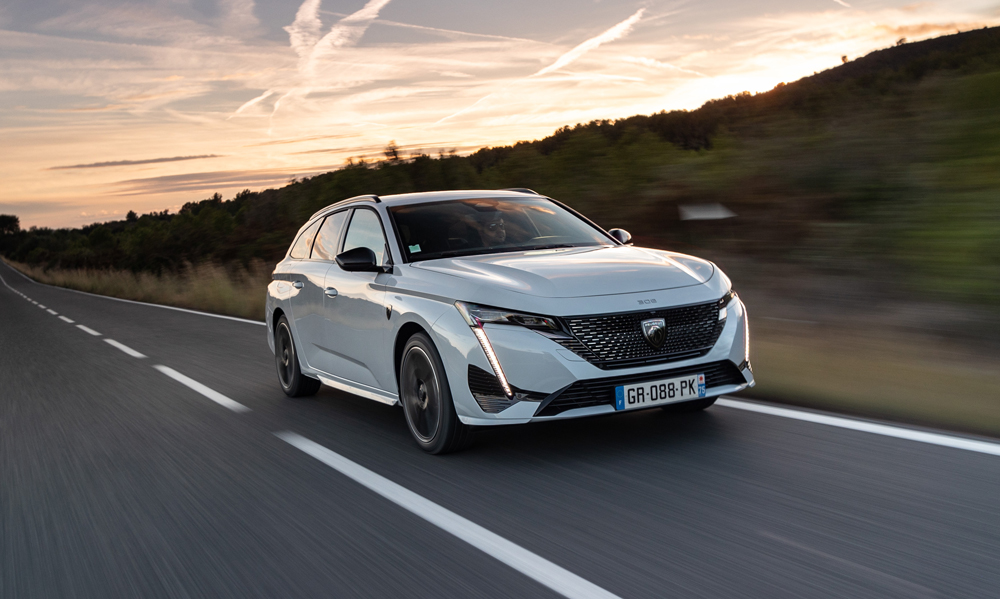
Highlighted Peugeot 308/E-308 SW
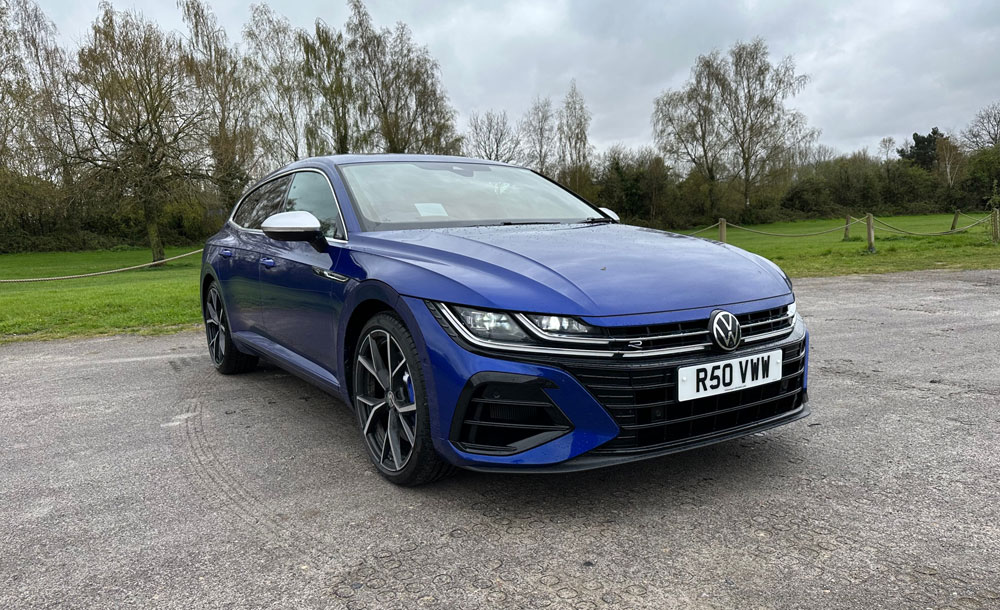
Volkswagen Arteon
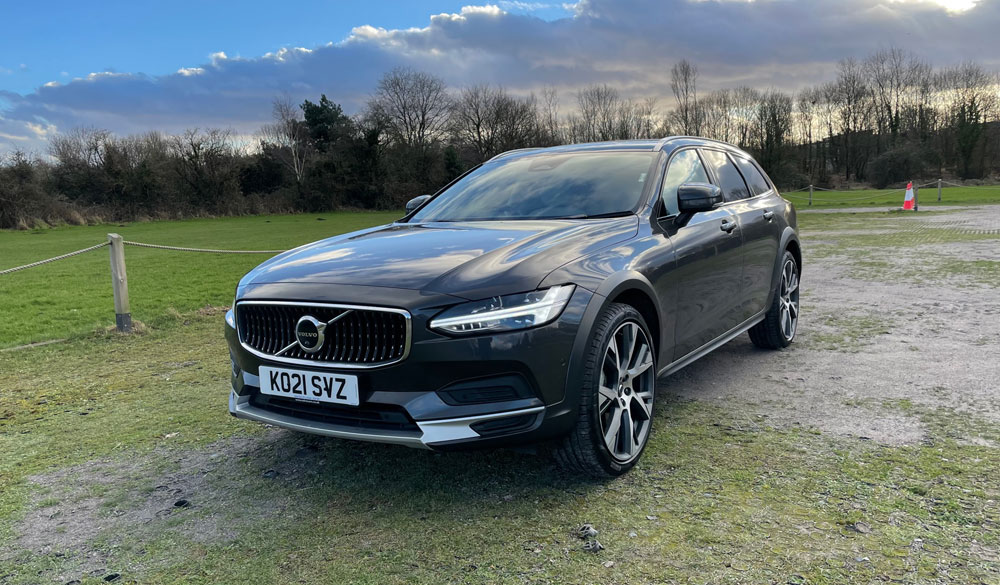
Volvo V90

Mercedes-Benz C-Class
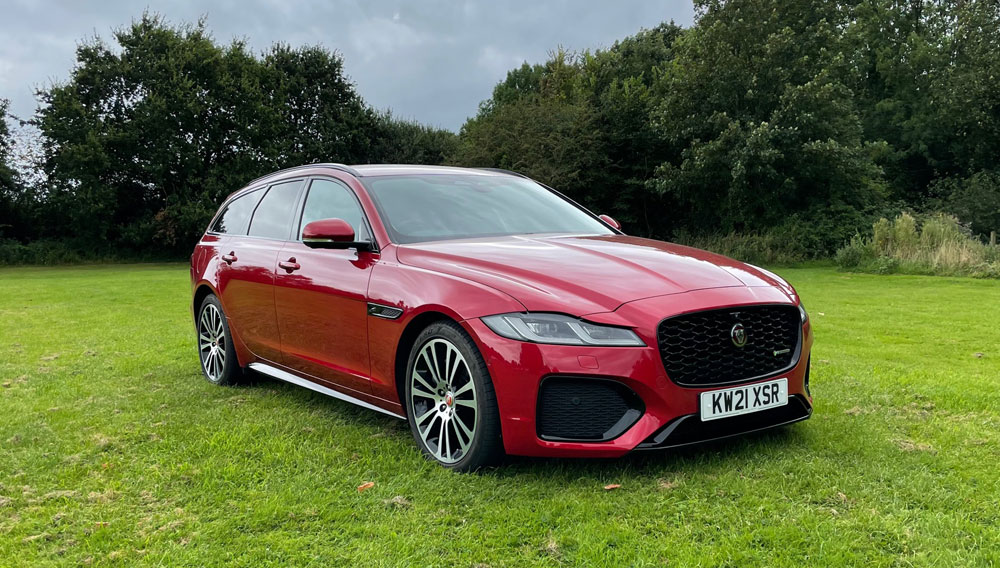
Jaguar XF/XFR
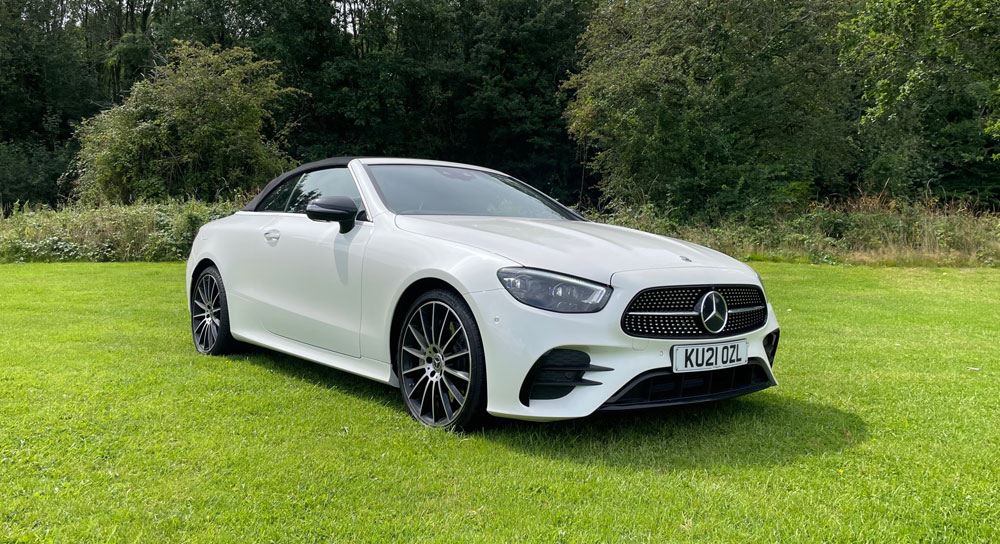
Mercedes-Benz E-Class
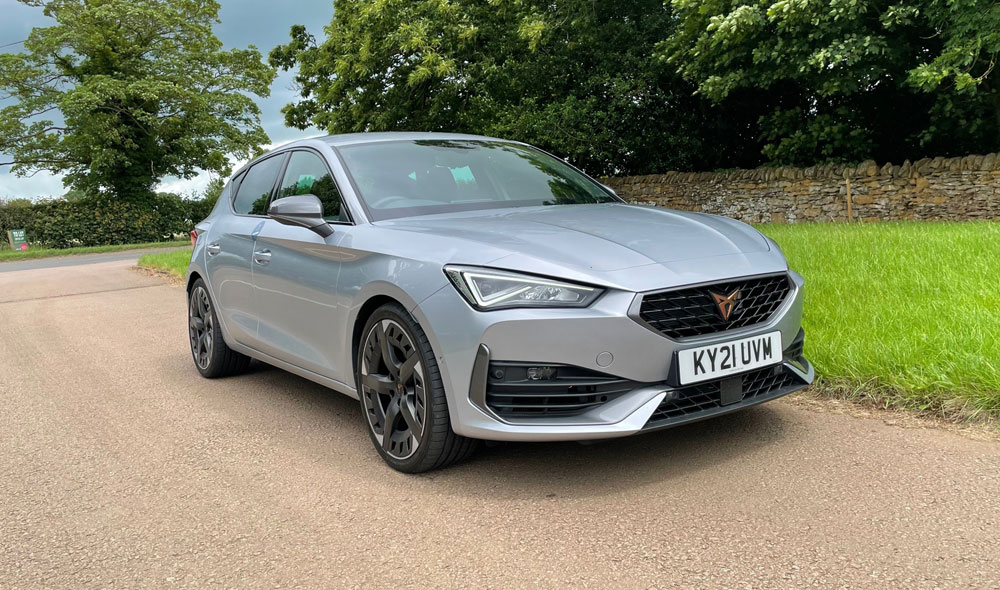
CUPRA Leon
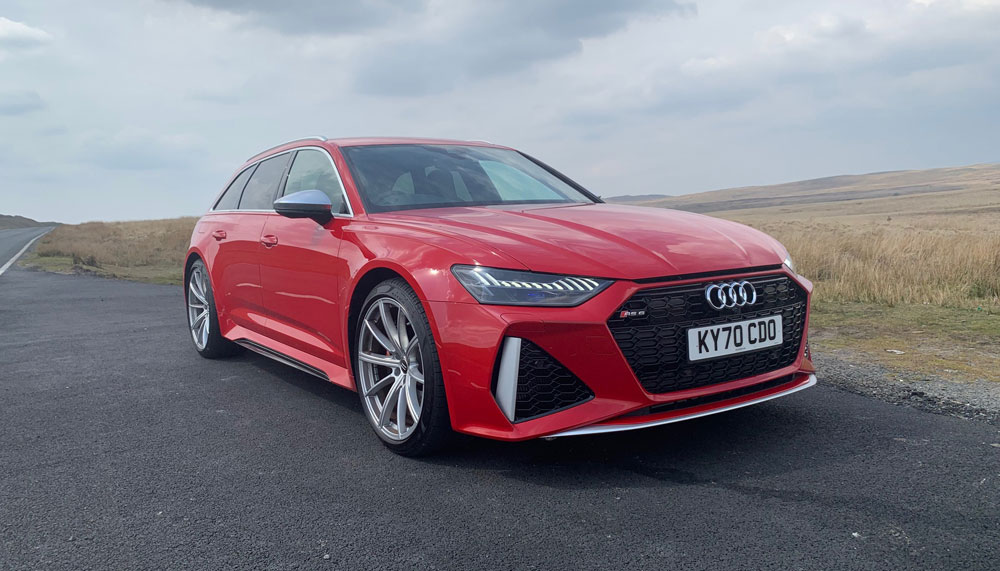
Audi RS 6 Avant
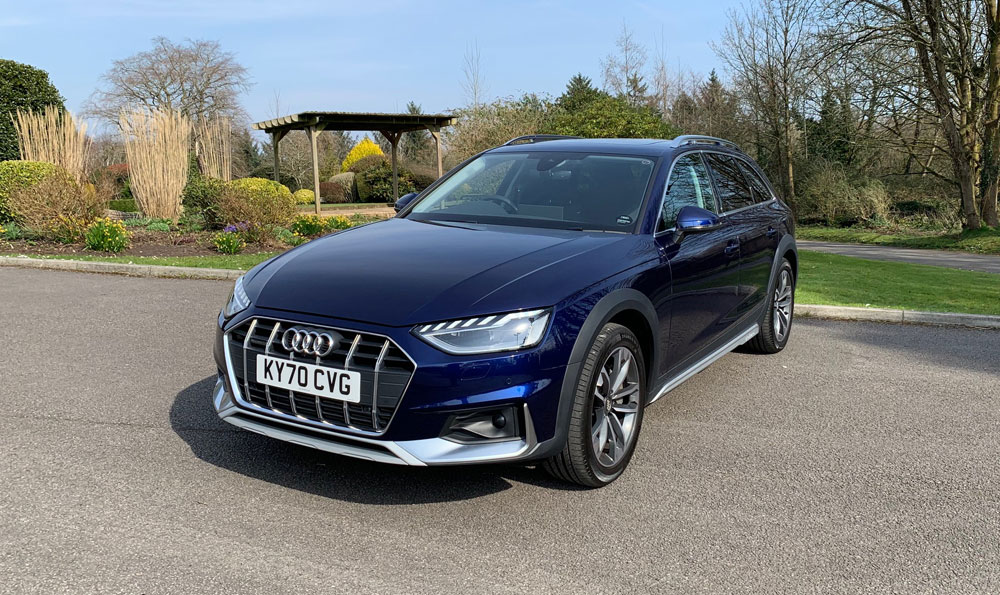
Audi A4
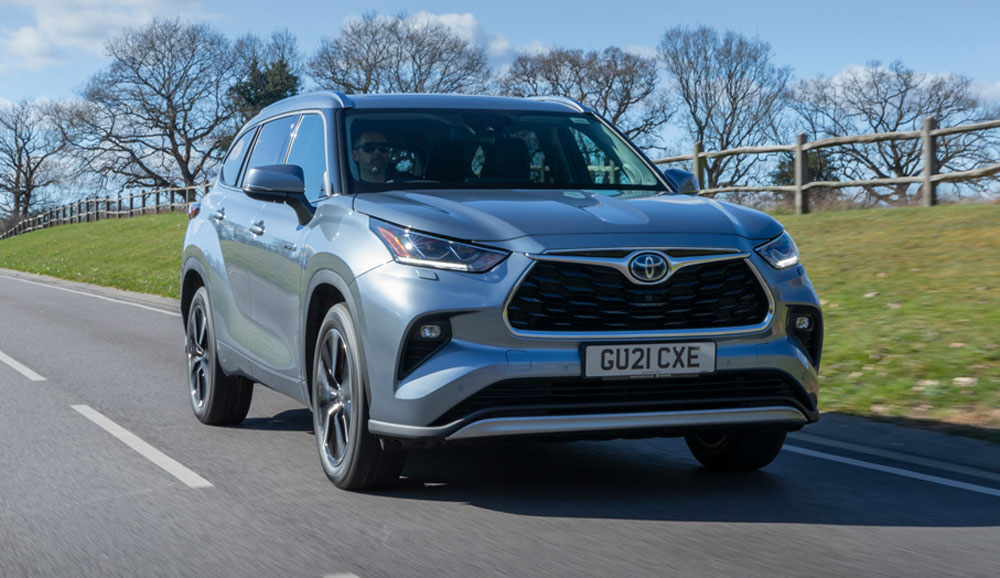
Toyota Highlander
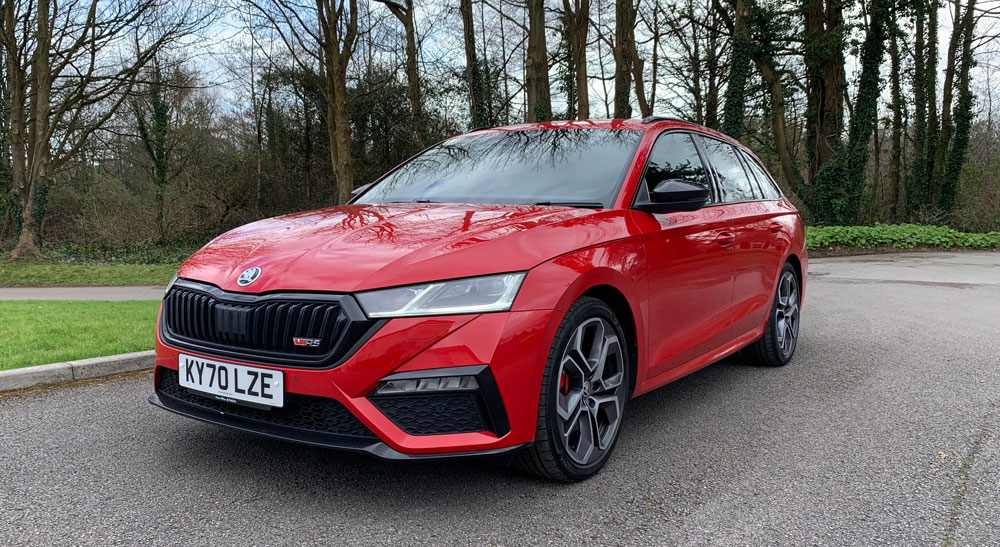
Skoda Octavia
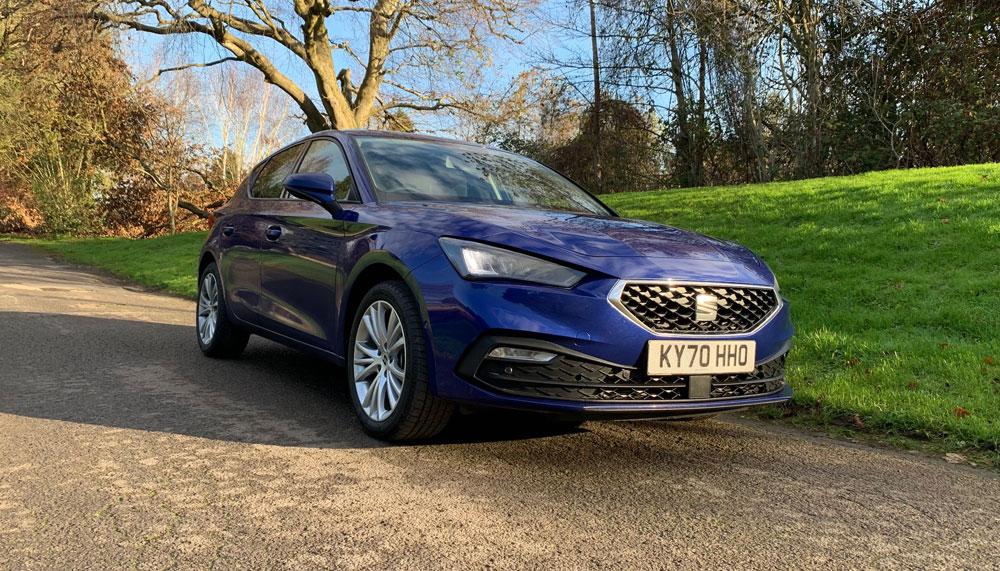
SEAT Leon
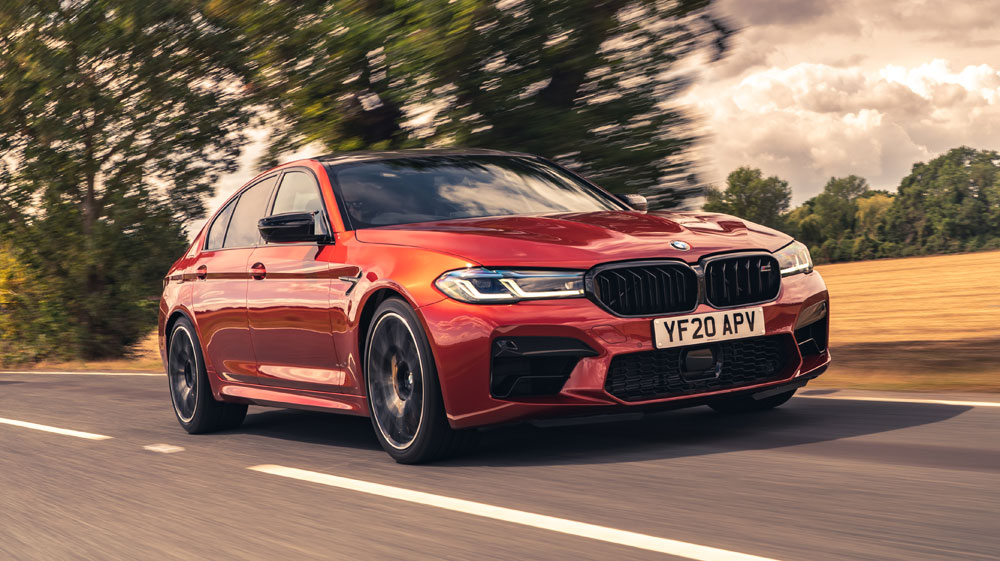
BMW Highlighted 5-Series
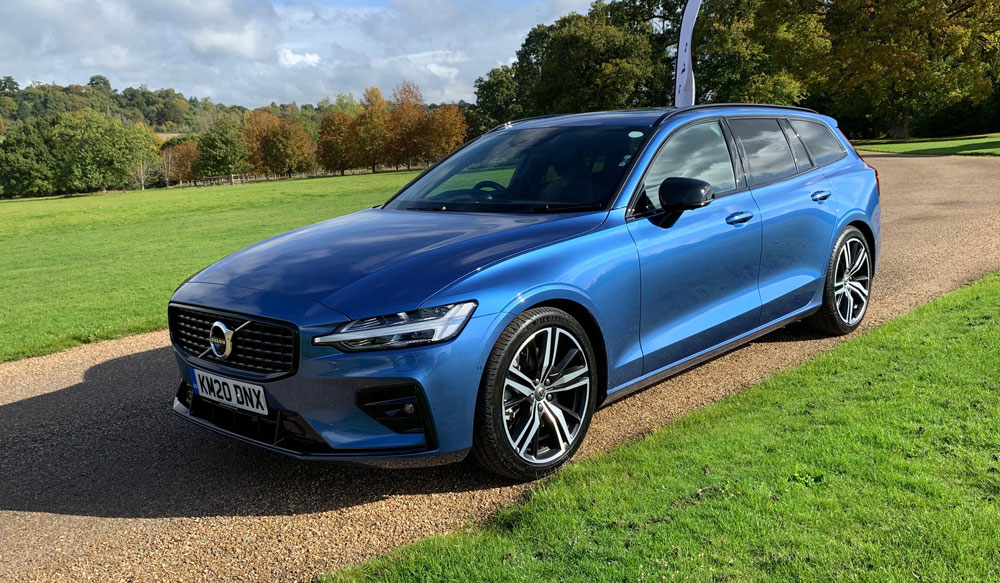
Volvo V60
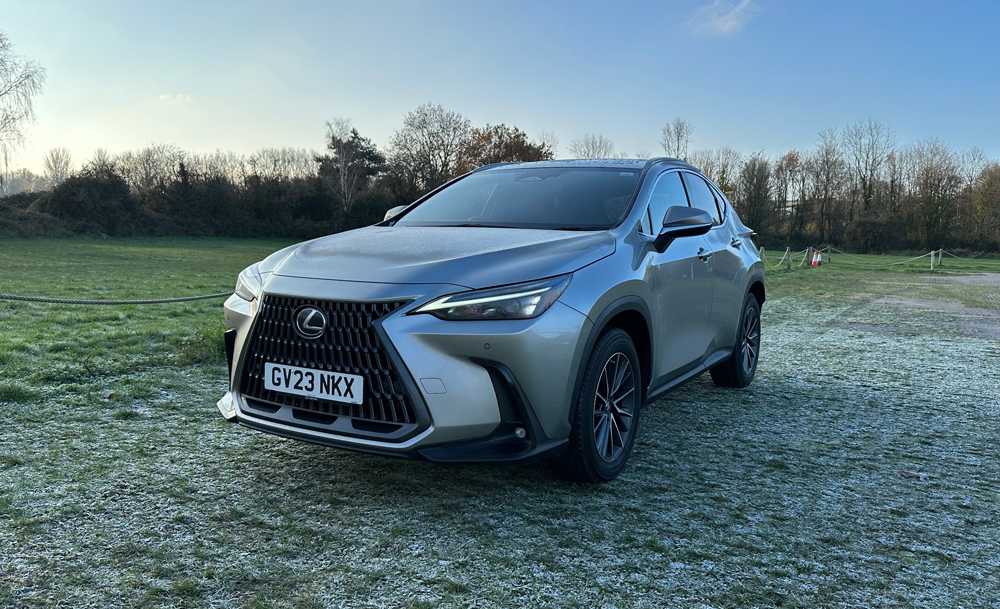
Lexus NX
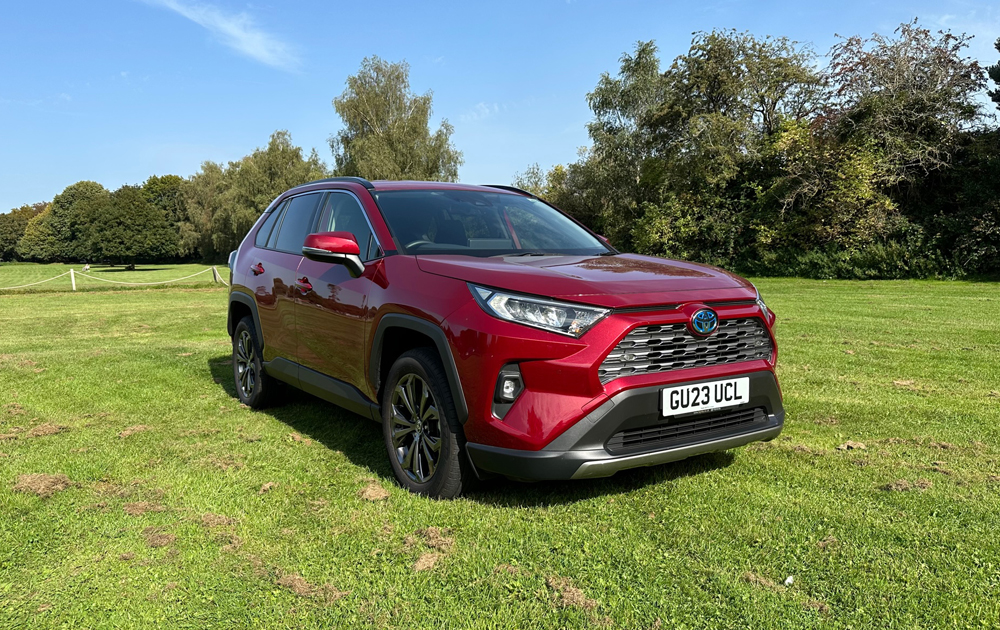
Highlighted Toyota RAV4
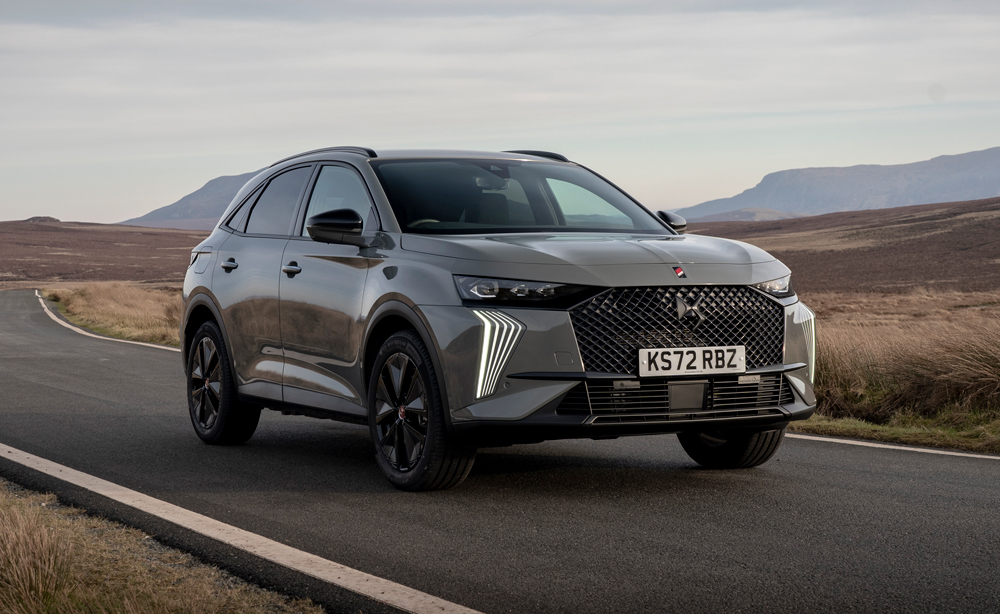
DS Highlighted DS 7
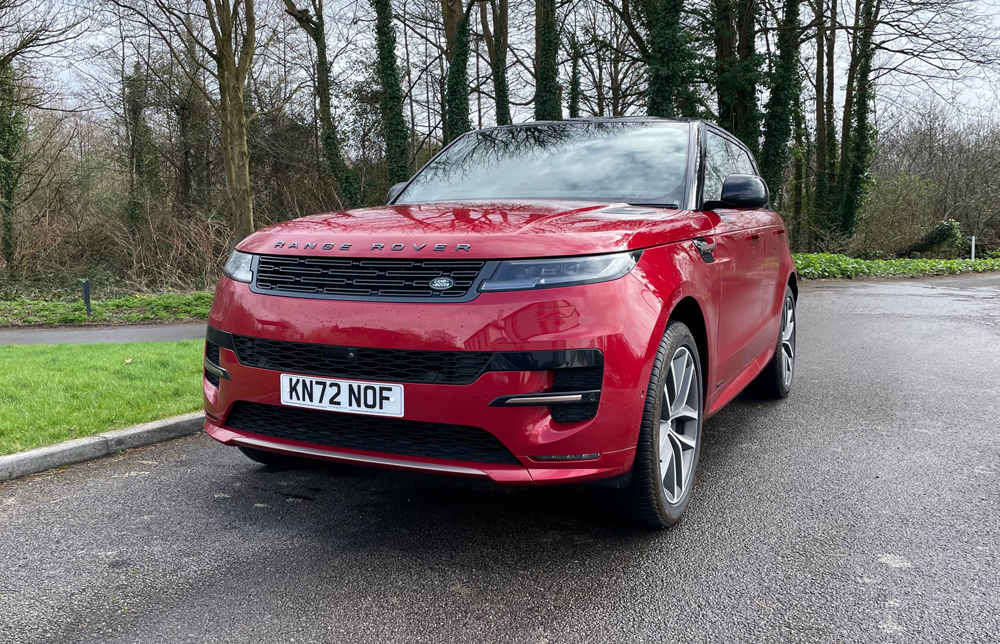
Land Rover Range Rover Sport
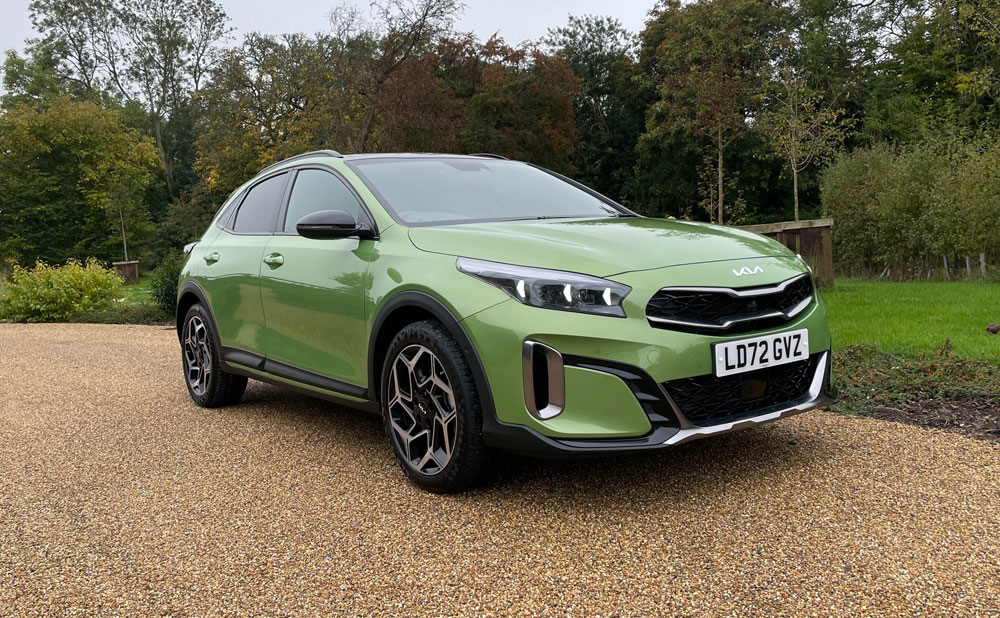
Kia XCeed
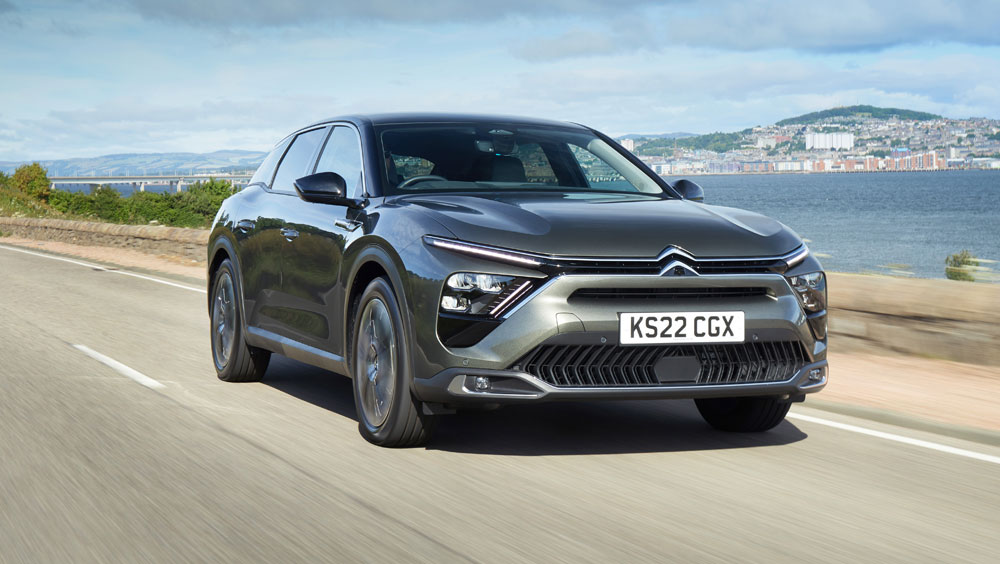
Citroen C5 X
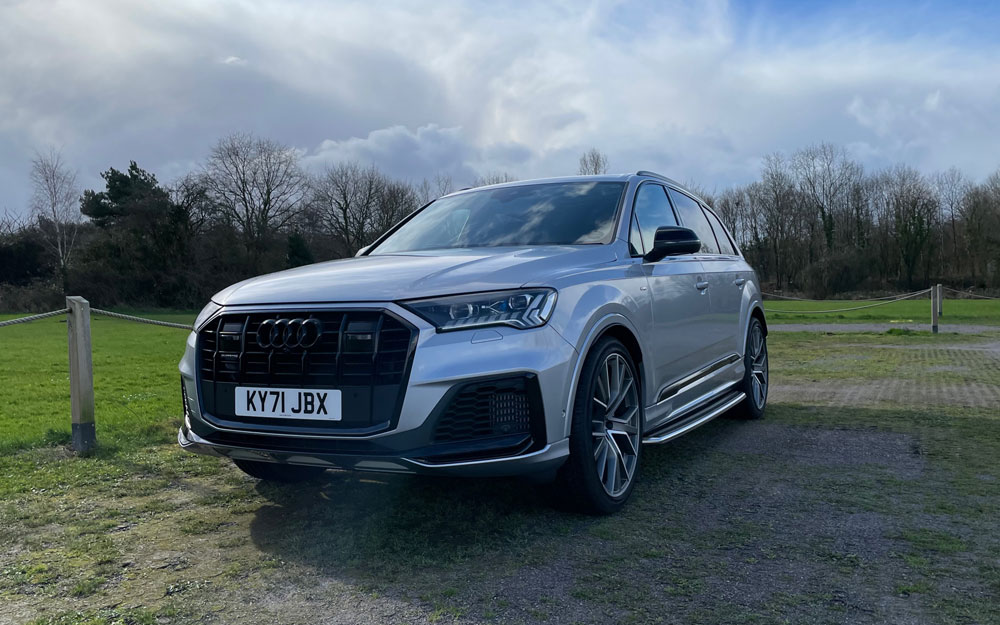
Audi Q7
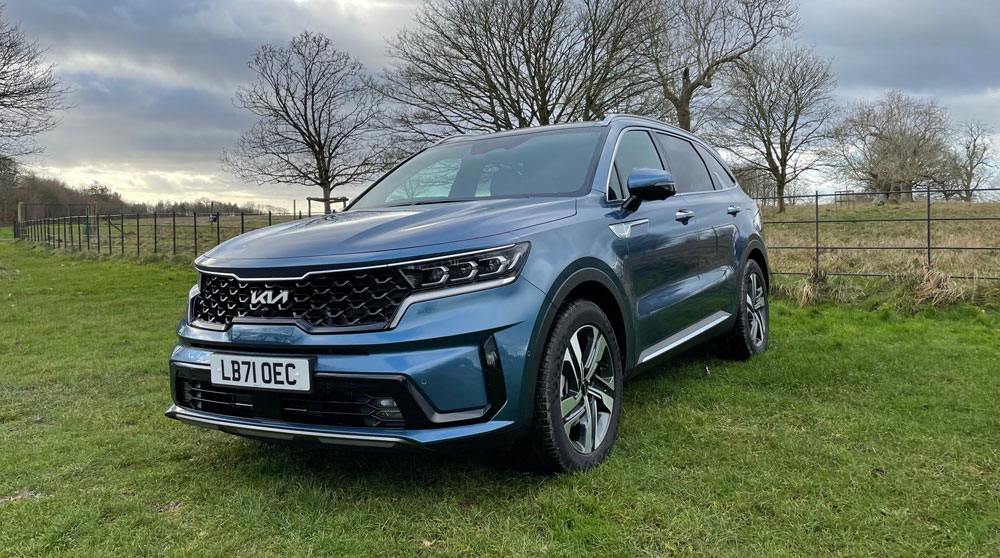
Kia Sorento

Mercedes-Benz E-Class
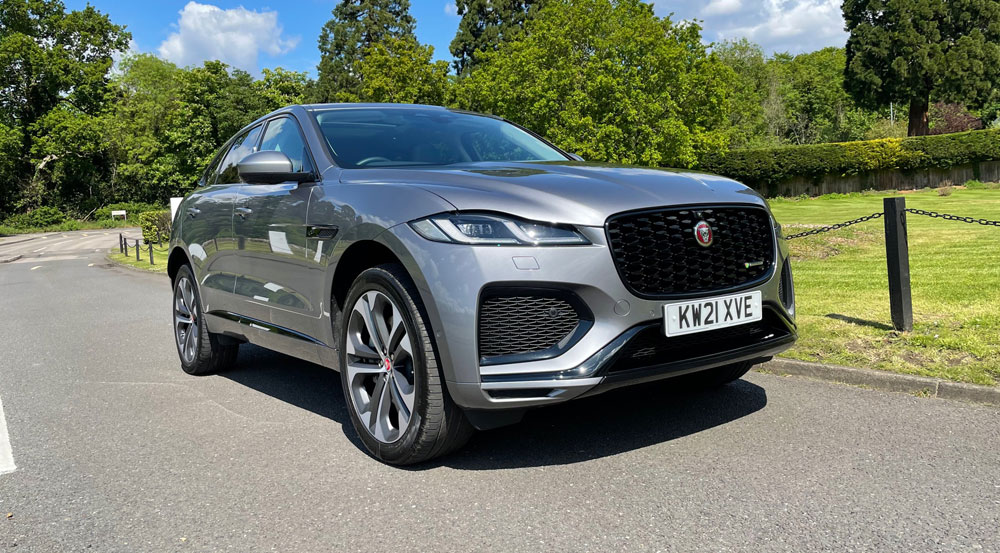
Jaguar F-PACE
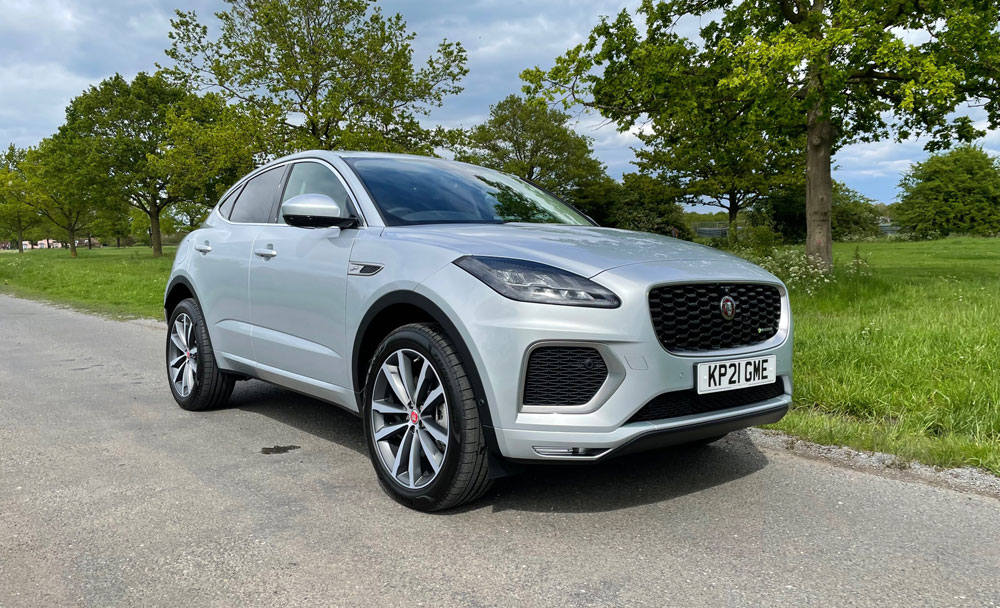
Jaguar E-PACE
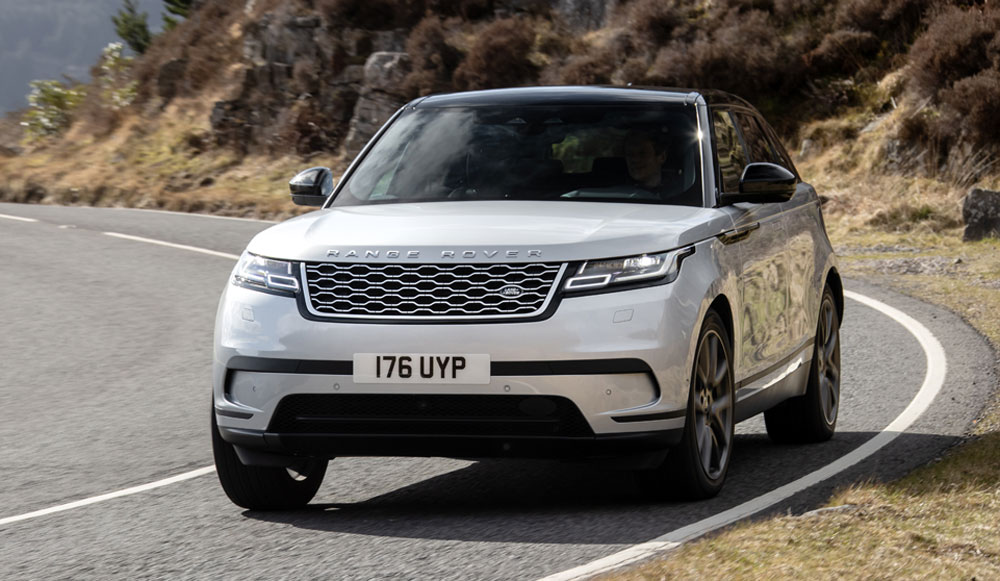
Land Rover Range Rover Velar
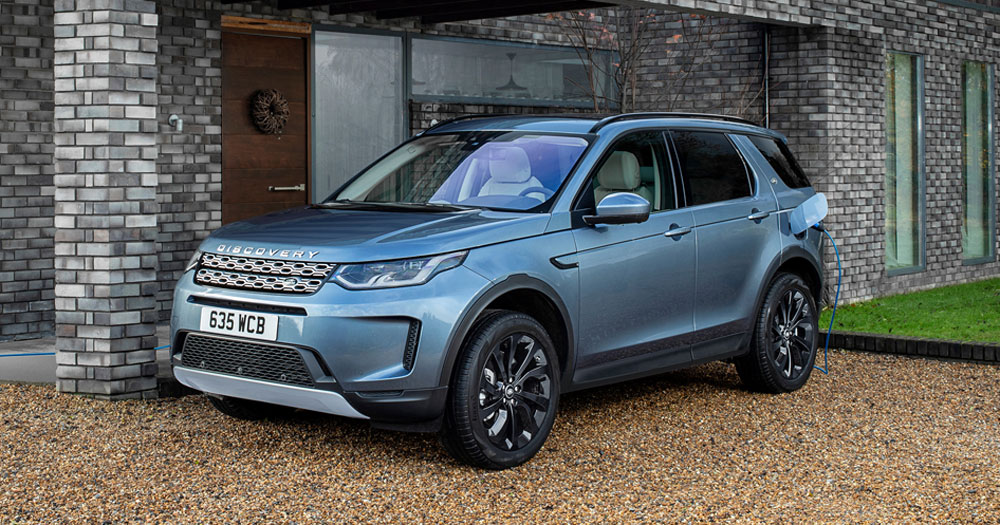
Land Rover Discovery Sport
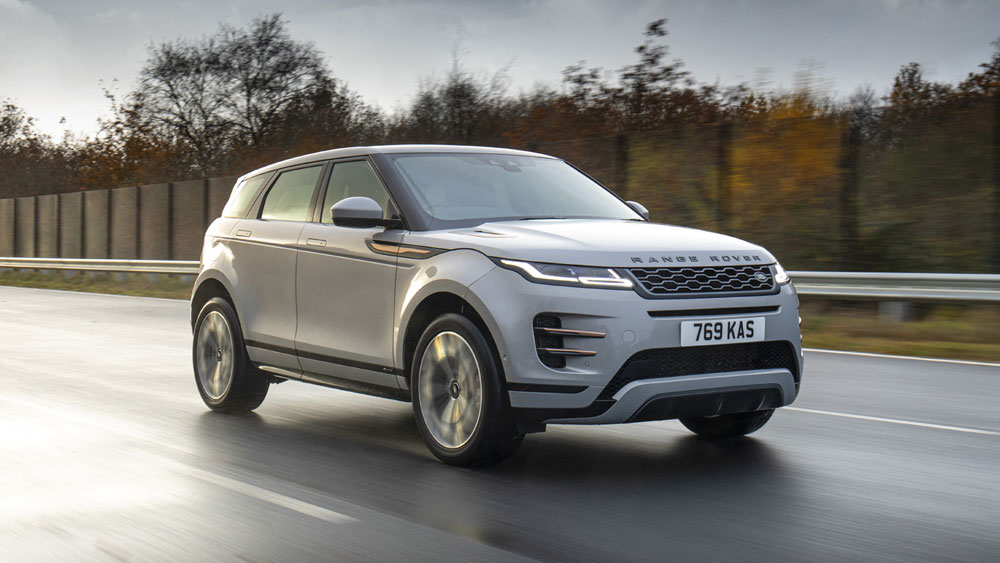
Land Rover Range Rover Evoque
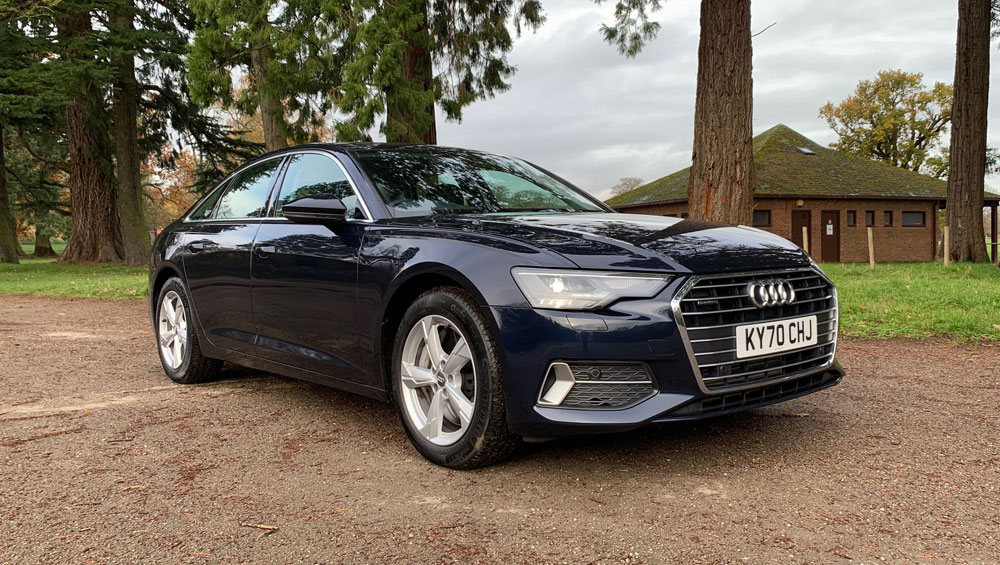
Audi A6
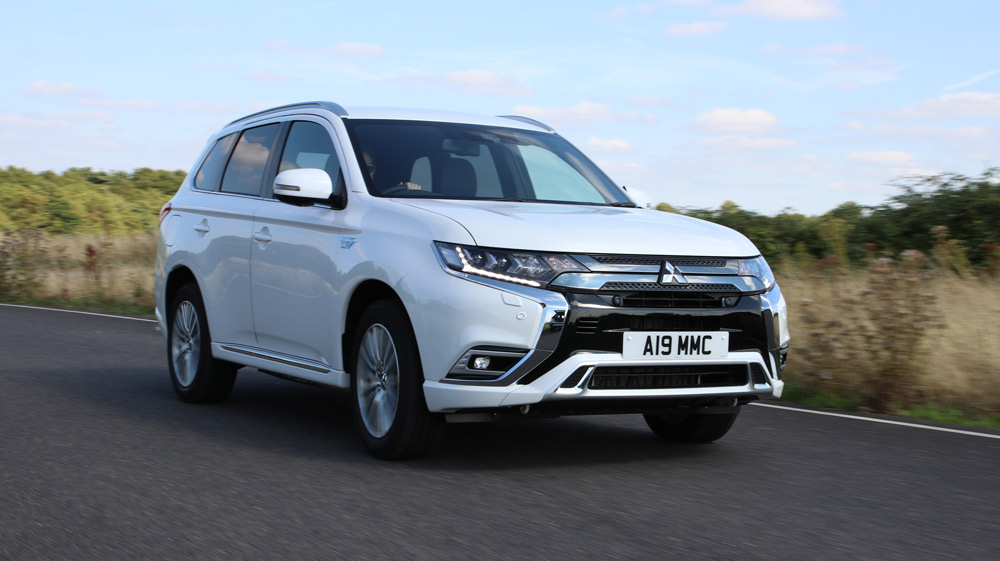
Mitsubishi Outlander
